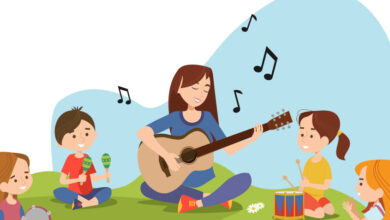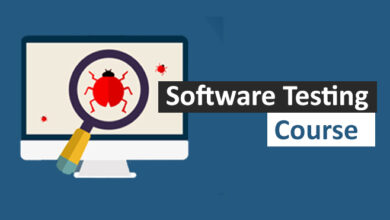
What Is an Alternative School? Everything You Need to Know
According to one report, 40% of families began considering alternative forms of schooling in 2020. This was the year that the coronavirus pandemic first appeared, and global lockdowns kept millions of schoolchildren home from their in-person classrooms.
While that event continues to change the way we look at schooling, it wasn’t the first to give parents pause. From school violence to debates over classroom material, there have been many issues spurring families to look outside the realm of traditional education.
Are you considering an alternative school for the little one in your life? Today, we’re taking a look at what these institutions involve and the features they include.
Table of Contents
The Basics of Alternative Schooling
For decades, the school system has been a hot topic.
This is primarily because students do not learn at a universal pace. Two students could receive the same material and follow the same curriculum, but one may come out as an honor student and the other could fail high school. Yet, we continue to inundate young learners with standardized tests meant to assess their knowledge, with little to no flexibility given to account for such learning differences.
As a result, parents around the world have turned to alternative forms of schooling, meant to assist atypical learners who do not adapt well to traditional school methods. These schools are designed to cover a range of different subjects and philosophies, though they are not as rigorously structured as mainstream ones.
History of Alternative Schools
We can trace the roots of the alternative school structure all the way back to the early 1800s. In the 1830s, one of the leaders of the Transcendentalist movement, Bronson Alcott, founded a learning institution called The Temple School.
The school’s classrooms were actually rooms within the Tremont Masonic Temple, hence its name. A progressive Transcendentalist, Alcott designed the school to focus on the benefits of play, denouncing such tactics as rote memorization and corporeal punishment for children who misbehaved.
It was a revolutionary idea at the time and was short-lived. Operating for fewer than 12 years, The Temple School eventually dissolved. Much of the conflict began when Alcott began introducing religious concepts into the teaching, and debates arose around the Gospels and other spiritual topics.
While the school was too radical for its time, it paved the way for the modern forms of alternative schooling that exist today.
Typical Alternative Students
Who attends alternative school? There isn’t a one-size-fits-all type of demographic.
For the most part, these are students who simply do not fit in well at a traditional school. While younger children can attend alternative schools, they are usually designed to accommodate teenagers.
However, it’s important to point out that these are not schools where all of the troublemakers go to learn. This is a common misconception about alternative schools, which has kept prospective parents and their curious kids from pursuing them.
While all of these students don’t necessarily have behavioral problems, some do. More often, however, they have an attendance problem. Traditional schools hold children and their families accountable for attendance and inflict regulatory measures if they miss more than a set number of days per school year.
If a student is required to miss a large number of days due to an illness, family conflict, or any other problem, then they could be banned from returning to their traditional school. This could mean they’re unable to complete their grade and move on to the next.
To avoid this, they’ll turn to an alternative school. Here, they can make up any credits that they missed and get back on track. When this is the case, those students will usually return to their former school once they’ve earned enough credits.
Different Types of Alternative Schools
Just as there isn’t a typical alternative learner, you also won’t find any cookie-cutter alternative schools. Rather, there are a few different categories of them.
These schools can be integrated into the public school system. Or, they can be independently and privately operated. In the public school realm, alternative schools are often located within the same complex, but in a different building.
You can also find them within institutional settings, such as a hospital or a juvenile facility. In the private school sector, they’re often referred to as charter schools. You can learn more about starting and attending a charter school in this guide.
Throughout your life, you may have interacted with various forms of alternative schooling and never realized it. This is because they can go by many different names. Other monikers include:
- Boarding schools
- Magnet schools
- Vocational schools
- Independent study schools
At a boarding school, students will live in the educational complex. They will usually eat their meals there and also perform recreational activities there. Magnet schools allow students to dive deeply into a certain subject and learn more about it.
Vocational schools are designed to assist students in acquiring the skills they need to find a job. Finally, independent study schools allow students to study on their own, without structured interference from teachers. These programs are usually held either online or in a remote learning setup.
Traditional Schools vs. Alternative Schools: A Comparison
Are you trying to decide between traditional schools vs. alternative schools? It’s important to understand that there is not one, clear element that divides the two.
However, there are certain features of alternative schools that you typically won’t find in a traditional school setting. These include:
- Flexible learning hours
- Flexible schedules
- Customized graduation requirements
- Different grading system/no grading system
- Smaller class sizes
- Mental and emotional health resources
Let’s take a look at a few of these in greater detail.
Flexible Hours/Schedule
You can find alternative schools that offer instruction at different times of the day. For instance, some operate in the evenings or on weekends to allow students to work full-time during the day.
You can also find schools that allow students to take courses online, or via distance learning. This way, anyone can receive a high school education despite their workday commitments.
Customized Graduation Requirements
At a traditional school, students must follow a pre-defined track before they’re able to graduate. This can be a stressful and insurmountable task for students who do not learn at a typical pace.
Some alternative schools allow students and teachers to work together in defining their graduation goals. This way, the plan is more customized around the student’s learning needs and the stress is minimal. They aren’t required to complete a certain number of classes per semester, and they can choose only courses that interest them.
As long as the alternative school is registered and recognized in the state, students can still receive a traditional diploma upon completion. This opens doors for those learners that may have otherwise stayed shut in the traditional school system.
Different Grading Systems
Many learners are put out by the idea of letter grades and the numbers associated with them. You can find alternative schools that replace formal assessments with written exams, which offer more flexibility.
Other schools will allow students to work at jobs or internships. Then, they can apply that work experience to their grade.
In these schools, students are free to explore the subjects and topics that interest them the most. This way, they do not spend time on material that will not serve their future careers or expand their personal pursuits.
Smaller Class Sizes
One of the biggest benefits of attending an alternative school is that most of these classrooms are smaller than the ones you’ll find at traditional schools. This gives students the advantage of having more direct, one-on-one attention and instruction.
Especially for those who struggle with learning differences or behavioral problems, this kind of interaction is exactly what most students need. It also gives teachers the time and space to tailor their curriculum around what those students need.
Mental and Emotional Health Resources
Lastly, some alternative schools also offer extended resources designed to support students’ mental and emotional health. This might mean more extensive counseling resources, support groups, or access to a network of therapists.
What About the Future?
Can you go to college after attending an alternative school? As long as it’s a registered institution, yes. However, these schools are less competitive, which can make it harder to stand out in your application.
Students will need a compelling reason to explain why they chose an alternative school over a traditional one. For instance, they can stay that they had to stay home and care for a loved one. Or, they did so to dive more deeply into art, music, or another talent they wanted to pursue.
You’ll also be hard-pressed to find a wide variety of extracurricular activities, sports, and clubs at an alternative school. These are factors that admissions officers will weigh, which could make their decision more difficult.
Should You Send Your Child to an Alternative School?
Now that you know a little more about how the alternative school system works, are you thinking about sending your child to one? As long as you do your research, this can be a viable solution for many types of learners.
The key is to understand which features your school provides, and how this could affect your child’s future career and academic achievement. Speak to the teachers, talk to other parents, and make an informed decision.
Interested in more guides like this? Check out our Education section!








